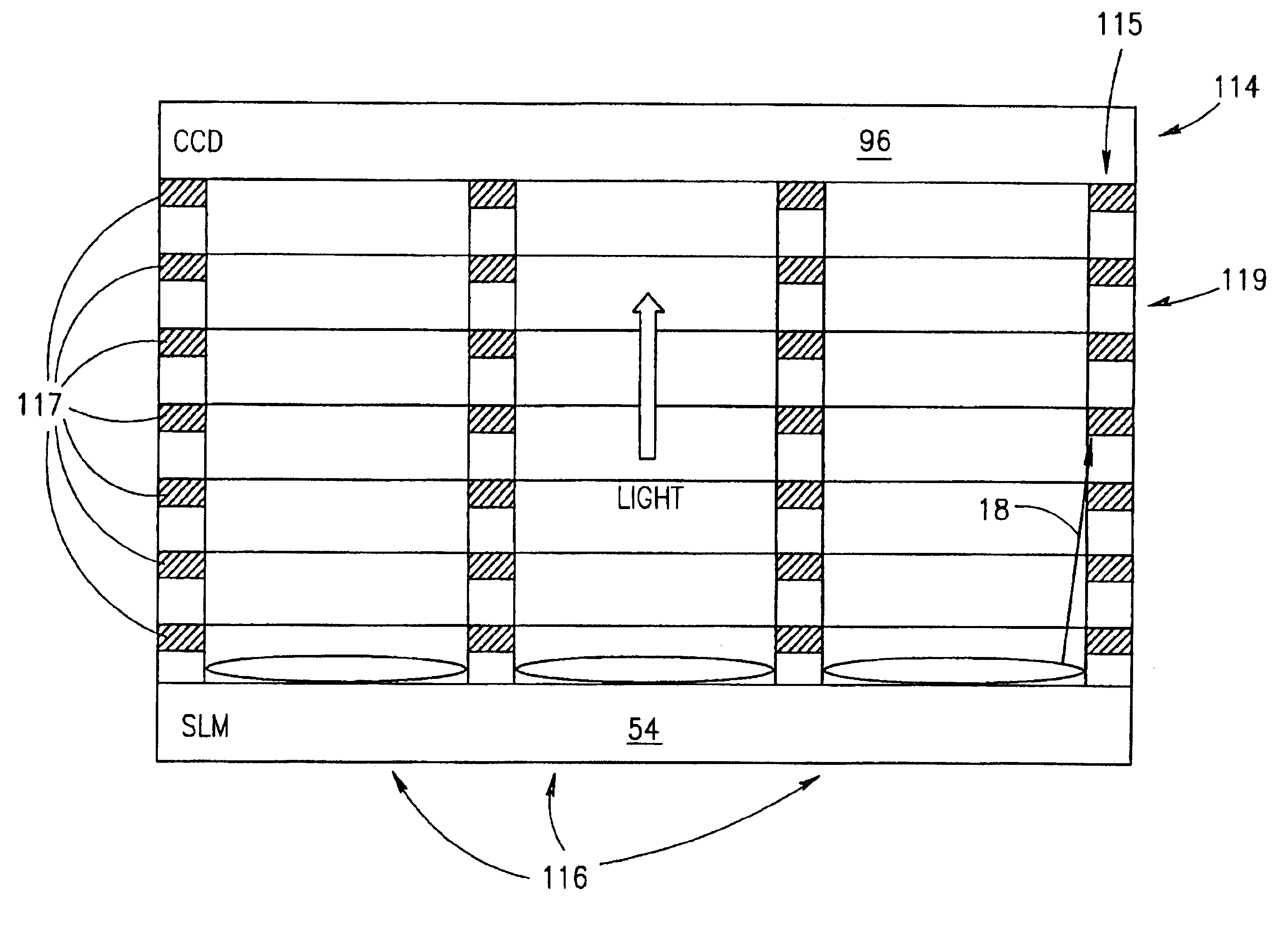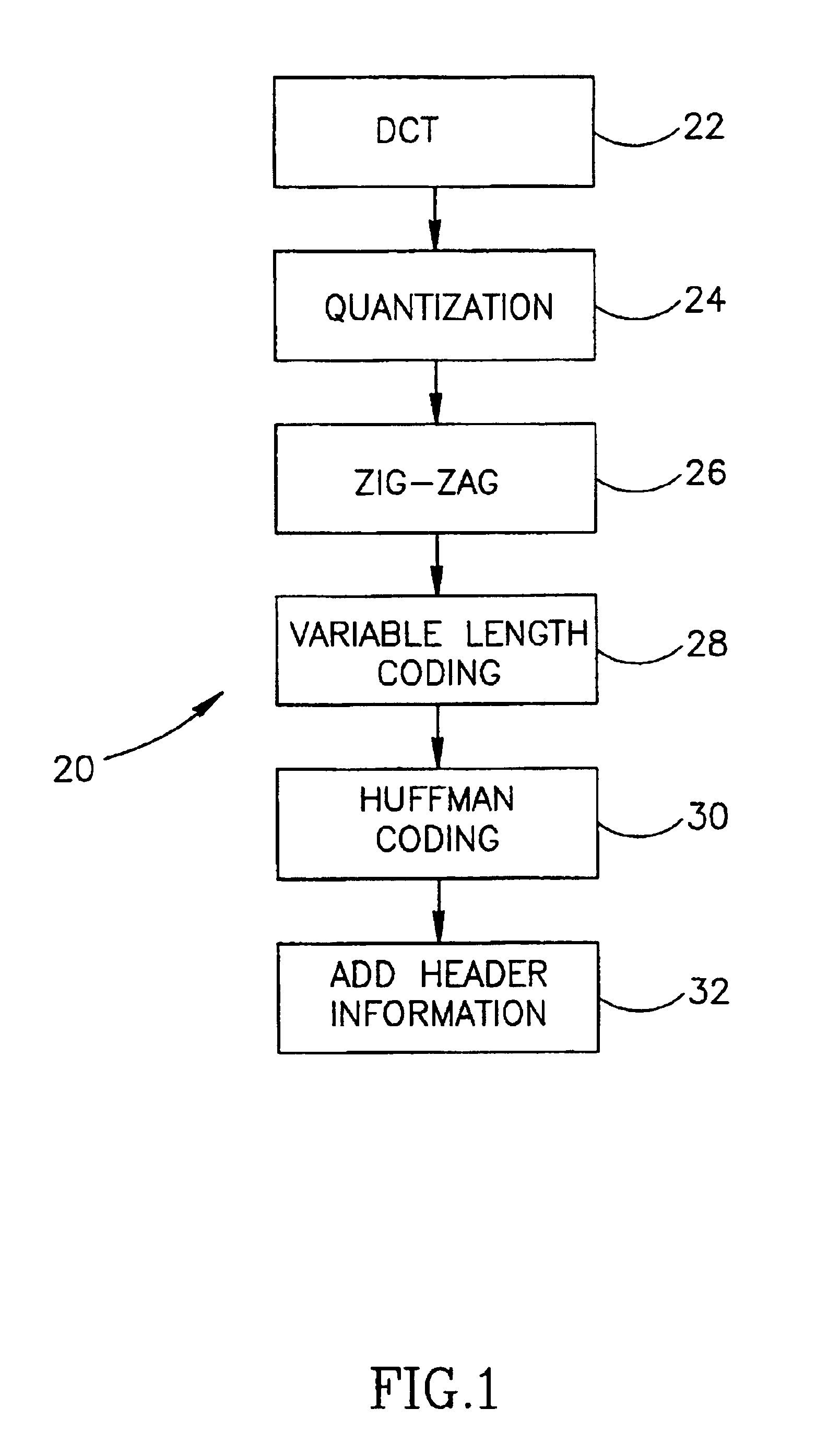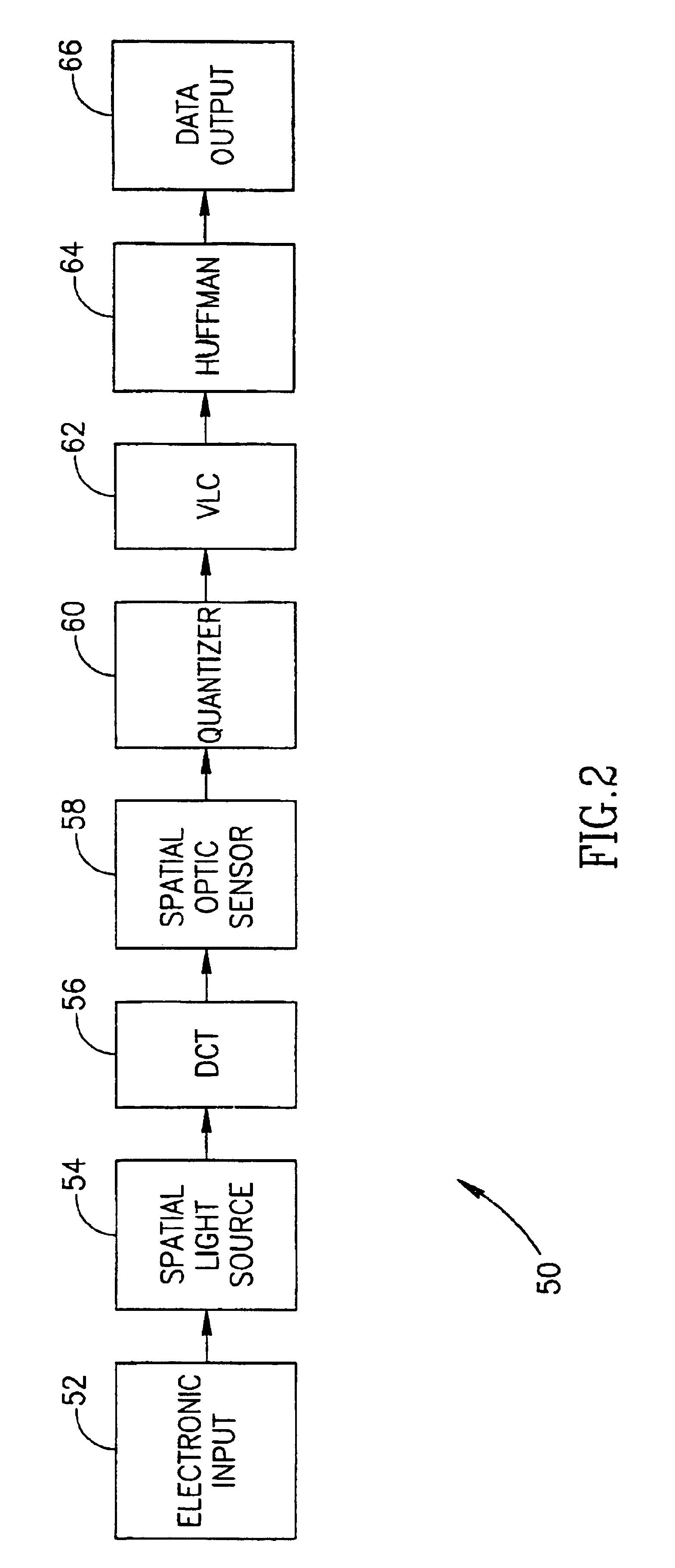Optical processing
a technology of optical processing and optical fiber, applied in the field of optical processing, can solve the problems of limited acceptance and often demanding decompression, and achieve the effect of reducing interactions
- Summary
- Abstract
- Description
- Claims
- Application Information
AI Technical Summary
Benefits of technology
Problems solved by technology
Method used
Image
Examples
Embodiment Construction
[0074]FIG. 1 is a flowchart of a base-line method 20 of JPEG-compliant compression. Image data is first transformed using the DCT (Discrete Cosine Transform) (22), to generate a set of coefficients. These coefficients are then quantized (24). The quantized coefficients are then unfolded from a 8×8 representation to a 64×1 representation (“Zig-Zag”, 26). These quantized coefficients are encoded using a variable-length encoding scheme (28), zero-run length encoded and then Huffman encoded (30), to reduce entropy. A compressed data file is then generated by prefixing the encoded data with header information (32). Other, similar, methods of JPEG compression are also known.
[0075]In accordance with an exemplary embodiment of the invention, various of the above steps are performed using optical elements, rather than using electronic or software elements. In the above described JPEG compression method, the step that is typically most computationally demanding, is the DCT step. Thus, in an e...
PUM
| Property | Measurement | Unit |
|---|---|---|
| relative angle | aaaaa | aaaaa |
| relative angle | aaaaa | aaaaa |
| weight | aaaaa | aaaaa |
Abstract
Description
Claims
Application Information
 Login to View More
Login to View More - R&D
- Intellectual Property
- Life Sciences
- Materials
- Tech Scout
- Unparalleled Data Quality
- Higher Quality Content
- 60% Fewer Hallucinations
Browse by: Latest US Patents, China's latest patents, Technical Efficacy Thesaurus, Application Domain, Technology Topic, Popular Technical Reports.
© 2025 PatSnap. All rights reserved.Legal|Privacy policy|Modern Slavery Act Transparency Statement|Sitemap|About US| Contact US: help@patsnap.com



